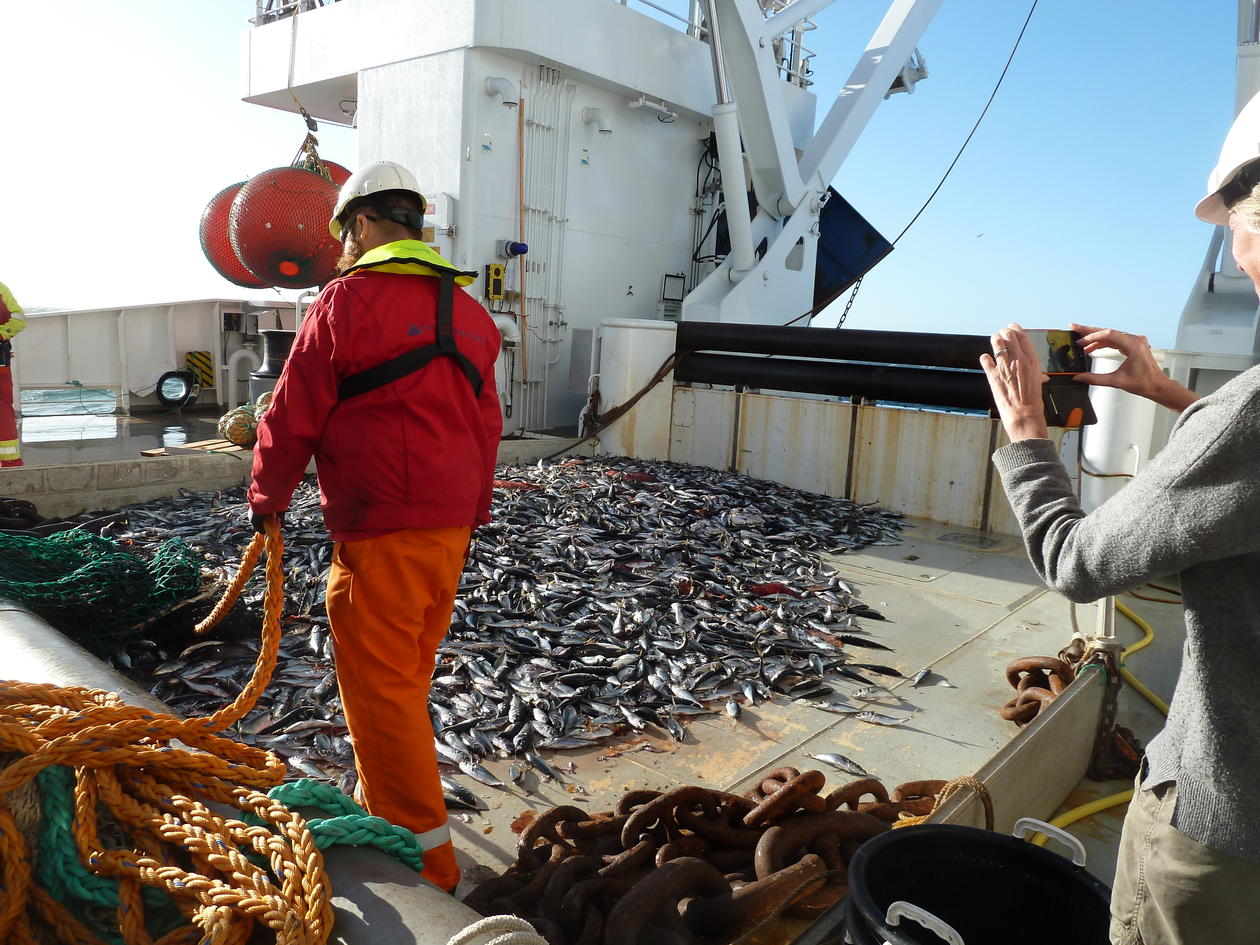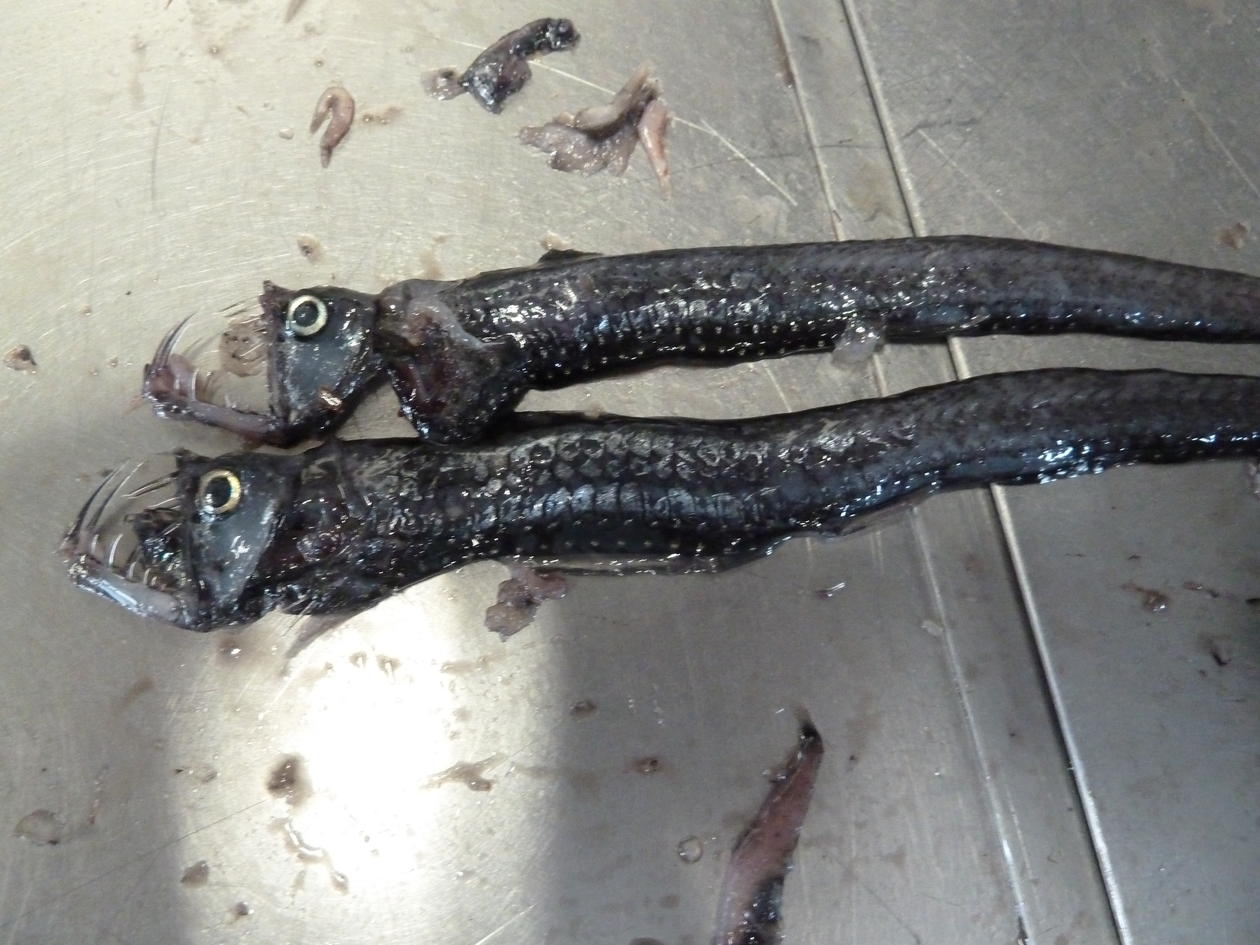Travel letter from the South Atlantic
A group of scientists from BIO are currently on survey in the South Atlantic Ocean

Main content
The expedition with Dr. Fridtjof Nansen in the Benguela upwelling ecosystem in the South Atlantic is now nearing its end. Here have Frank Midtøy, Dag Aksnes, and Anne Gro Vea Salvanes joined a small adventure arranged under the Science plan for the EAF-Nansen project. The vessel has crossed 23º S to study environmental variables and mesopelagic fish along a gradient to 3500m depth. We arried Africa in sand and dust storm, at the time when there was a snow storm in Norway. The wind has followed us most of the days, and we have got lots of rocking, with one calmer day. Despite heavy winds and rough seas, we have obtained many exciting samples. Out in the Atlantic, we have caught as many as 71 species of mesopelagic fish. We cannot claim to have determined these to the species level.
Fortunately, we have a competent taxonomist on board who has been able check our species ID's. On the shelf we took a bottom trawl haul to get samples of Sufflogobius bibarbatus – commonly known as the Benguela goby. We also got 3 tonnes of Cape horse mackerel, but we could pick out a nice sample of gobies for closer inspection. Today we have trawled on pelagic echoes registerations, without quite knowing what we trying to catch. It was a rather long haul. The catch turned out to be about 10 tonnes of jellyfish. Now we are approaching the land. There we shall work on the goby samples—on a stable platform, without needing to try to stabilize ourselves in order to stay in place.

